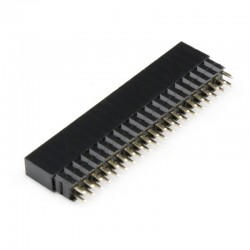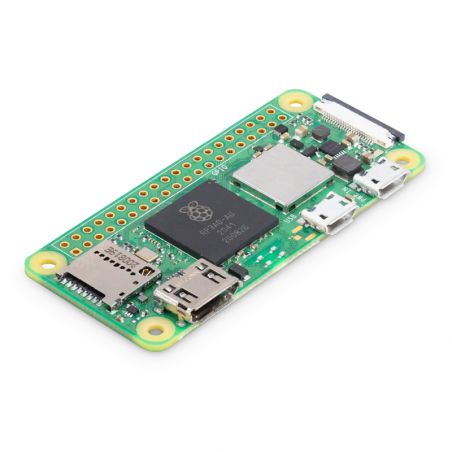
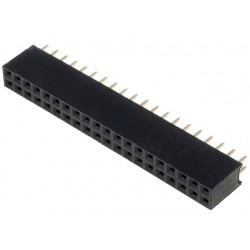
Socket female 40pins 20x2
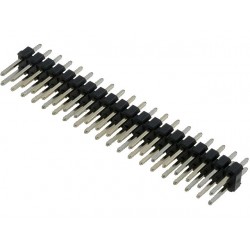
Header 20x2 pins male
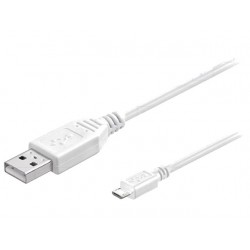
Cabo USB A p/ micro B 0.30m
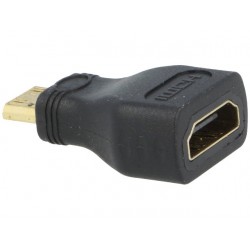







The same size but five times faster than its predecessor, the Raspberry Pi Zero W. The new board now has a Quad-Core 64-bit processor, ARM Cortex-A53 type, clocked at 1 GHz and 512 MB of SDRAM.
If you have any questions on this product please feel free to contact us.
*Disclaimer: The images are merely illustrative.
Raspberry Pi Zero 2 W is the latest product in our most affordable range of single-board computers. The successor to the breakthrough Raspberry Pi Zero W, Raspberry Pi Zero 2 W is a form factor–compatible drop-in replacement for the original board.
The board incorporates a quad-core 64-bit Arm Cortex-A53 CPU, clocked at 1GHz. At its heart is a Raspberry Pi RP3A0 system-in-package (SiP), integrating a Broadcom BCM2710A1 die with 512MB of LPDDR2 SDRAM. The upgraded processor provides Raspberry Pi Zero 2 W with 40% more single-threaded performance, and five times more multi-threaded performance, than the original single-core Raspberry Pi Zero.
Raspberry Pi Zero 2 W offers 2.4GHz 802.11 b/g/n wireless LAN and Bluetooth 4.2, along with support for Bluetooth Low Energy (BLE), and modular compliance certification.
The board has a microSD card slot, a CSI-2 camera connector, a USB On-The-Go (OTG) port, and an unpopulated footprint for a HAT-compatible 40-pin GPIO header. It is powered via a micro USB socket. Video output is via a mini HDMI port; composite video output can easily be made available via test points if needed.
Sharing the same form factor as the original Raspberry Pi Zero, Raspberry Pi Zero 2 W fits inside most existing Raspberry Pi Zero cases.
Form factor: 65mm × 30mm
Processor: Broadcom BCM2710A1, quad-core 64-bit SoC (Arm Cortex-A53 @ 1GHz)
Memory: 512MB LPDDR2
Connectivity:
2.4GHz IEEE 802.11b/g/n wireless LAN, Bluetooth 4.2, BLE, onboard antenna
1 × USB 2.0 interface with OTG •
HAT-compatible 40-pin I/O header footprint •
microSD card slot •
Mini HDMI port
CSI-2 camera connector
Video:
HDMI interface
Composite video
Multimedia:
H.264, MPEG-4 decode (1080p30)
H.264 encode (1080p30)
OpenGL ES 1.1, 2.0 graphics
Input power: 5V DC 2.5A
Operating temperature: -20°C to +70°C
Production lifetime: Raspberry Pi Zero 2 W will remain in production until at least January 2028
Compliance: For a full list of local and regional product approvals, please visit pip.raspberrypi.com
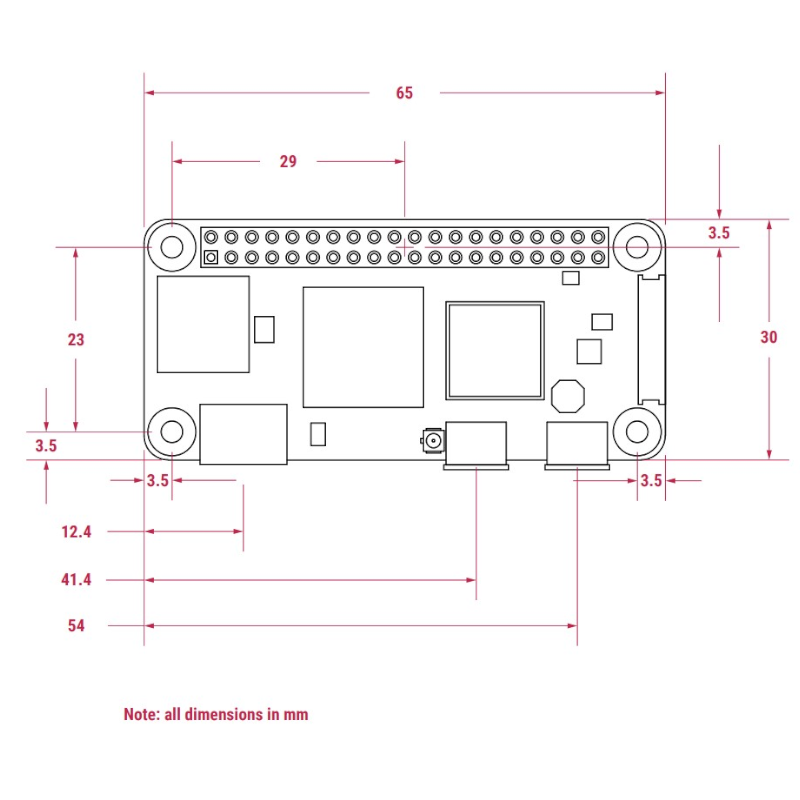
Any external power supply used with Raspberry Pi Zero 2 W shall comply with relevant regulations and standards applicable in the country of intended use.
This product should be operated in a well-ventilated environment, and if used inside a case, the case should not be covered.
Whilst in use, this product should be placed on a stable, flat, non-conductive surface, and should not be contacted by conductive items.
The connection of incompatible devices to Raspberry Pi Zero 2 W may affect compliance, result in damage to the unit, and invalidate the warranty.
All peripherals used with this product should comply with relevant standards for the country of use and be marked accordingly to ensure that safety and performance requirements are met. These articles include but are not limited to keyboards, monitors, and mice when used in conjunction with Raspberry Pi Zero 2 W.
The cables and connectors of all peripherals used with this product must have adequate insulation so that relevant safety requirements are met.
To avoid malfunction or damage to this product, please observe the following:
Do not expose to water or moisture, or place on a conductive surface whilst in operation.
Do not expose to heat from any source; Raspberry Pi Zero 2 W is designed for reliable operation at normal ambient temperatures.
Take care whilst handling to avoid mechanical or electrical damage to the printed circuit board and connectors.
Whilst it is powered, avoid handling the printed circuit board, or only handle it by the edges to minimise the risk of electrostatic discharge damage.
Related products




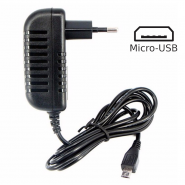

The same size but five times faster than its predecessor, the Raspberry Pi Zero W. The new board now has a Quad-Core 64-bit processor, ARM Cortex-A53 type, clocked at 1 GHz and 512 MB of SDRAM.

